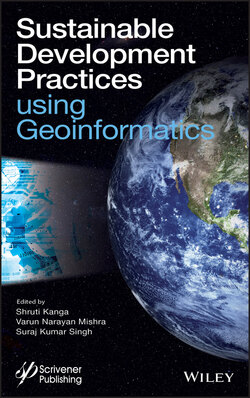Читать книгу Sustainable Development Practices Using Geoinformatics - Группа авторов - Страница 44
2.5 Conclusion
ОглавлениеThe present study examines the hazards and their associated risk in a South Karanpura coal mining and the surrounding region. The results indicates that high and very high risk zones are present in the central, eastern, and south-eastern parts of the study area, whereas northern, southern, and western parts lie in moderate to low risk zones. About 11.35% (43.20 km2) and 20.68% (78.96 km2) of the area are in very high to high risk zones, whereas 33.01% (125.68 km2) and 34.97% (133.16 km2) of the area lay in moderate to low risk zones. The present study clearly shows that high risk zone exists in those areas, which have a coal mining industry along with a very high population. The industrial area is found to be more hazardous in comparison to coal mining and requires more focus on developing a sustainable plan to reduce the ill effect of biomass burning and allied activity that induced hazards in the area. Some active and abandoned mine fire located at Saunda, Lapanga, Bhurkunda, and Urimari needs special attention so that subsidence triggered due to sub-surface coal fires can be averted in such locations. Results of this hazard, vulnerability, and risk assessment study provide a basis from which local planers, administrators, and responders can create or update the regional district’s emergency plan, allocate resources for risk mitigation, enhance community preparedness, and prepare budgets for cost-effective on-going emergency planning. Since the nature of hazards and vulnerability conditions are similar in any coal mining region, the methodology presented in the present study can be applied to other regions.
